Are you ready to take your career to the next level? If so, you’ll want to create a standout resume for your Advertising Director job search. This is especially important if you have experience in an industry that may not be hiring or promoting many people. If you aren’t currently working as an advertising director, it might be challenging to put together a resume that demonstrates your value and skills in this field. But with the right approach, it isn’t impossible! Our resume example and writing guide will help you build the perfect document for your job search as an advertising director. If your responsibilities revolved around managing advertising campaigns, ensuring advertisements were designed correctly, and overseeing promotional materials for products, services, or company brand identity—this article is for you! In this blog post, we’ll show you how to highlight all of these experiences on your CV and include them in the right way on a resume for Advertising Director jobs.
Advertising Director Resume Example
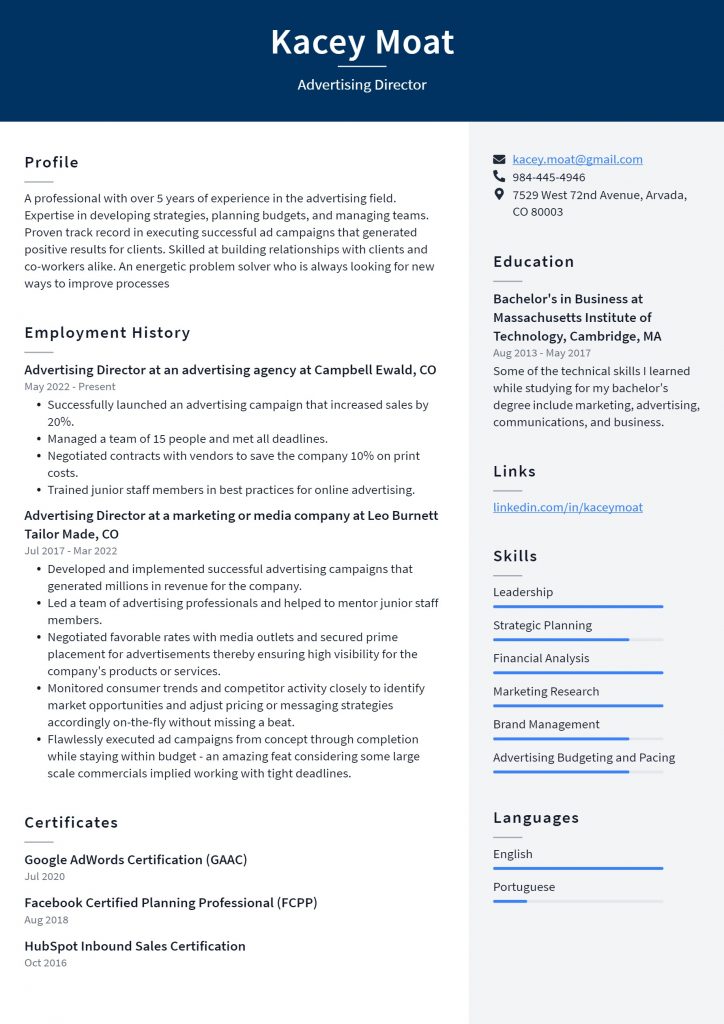
Download This Advertising Director Resume as PDF
Advertising Manager Resume Example
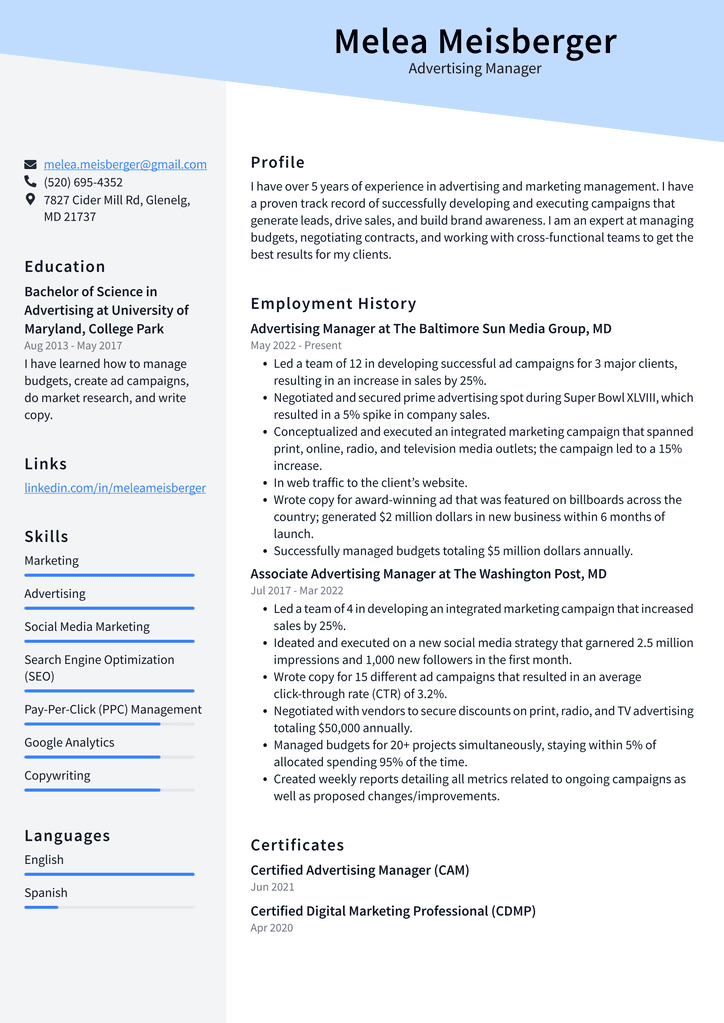
Download This Advertising Manager Resume as PDF
Assistant Advertising Manager Resume Example
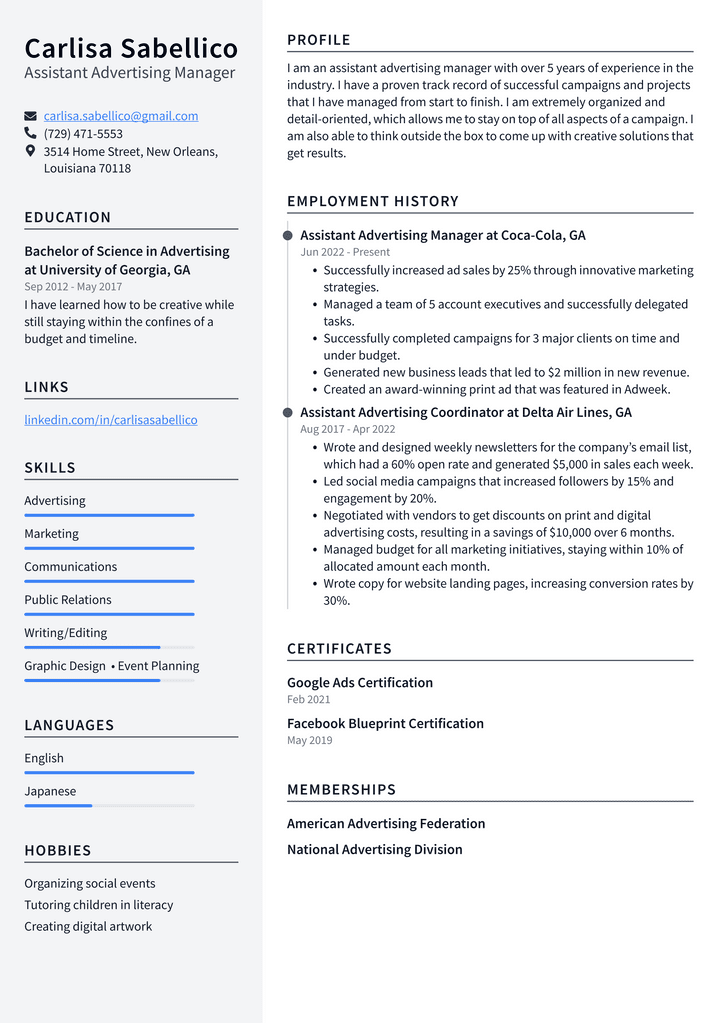
Download This Assistant Advertising Manager Resume as PDF
Advertising Sales Manager Resume Example
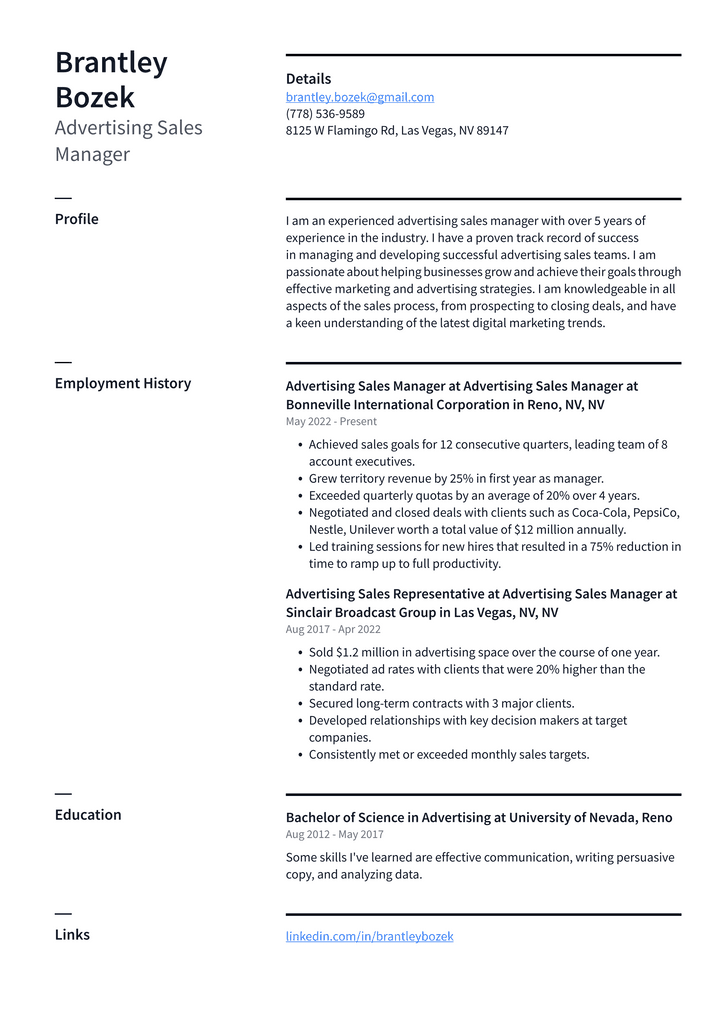
Download This Advertising Sales Manager Resume as PDF
Creative Director Resume Example
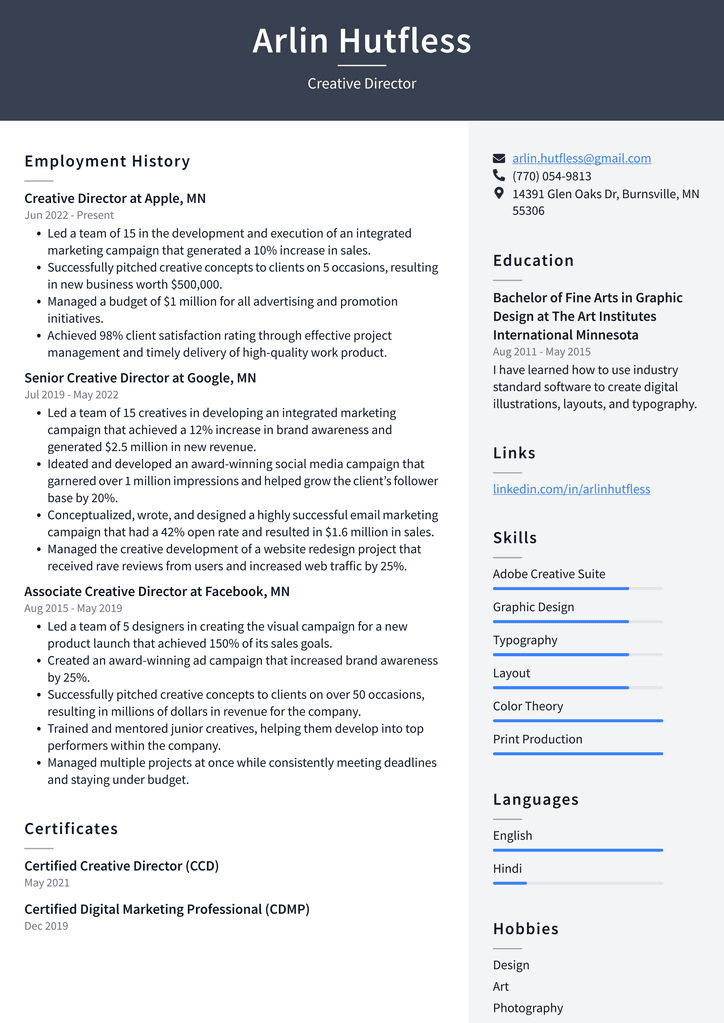
Download This Creative Director Resume as PDF
Account Director Resume Example
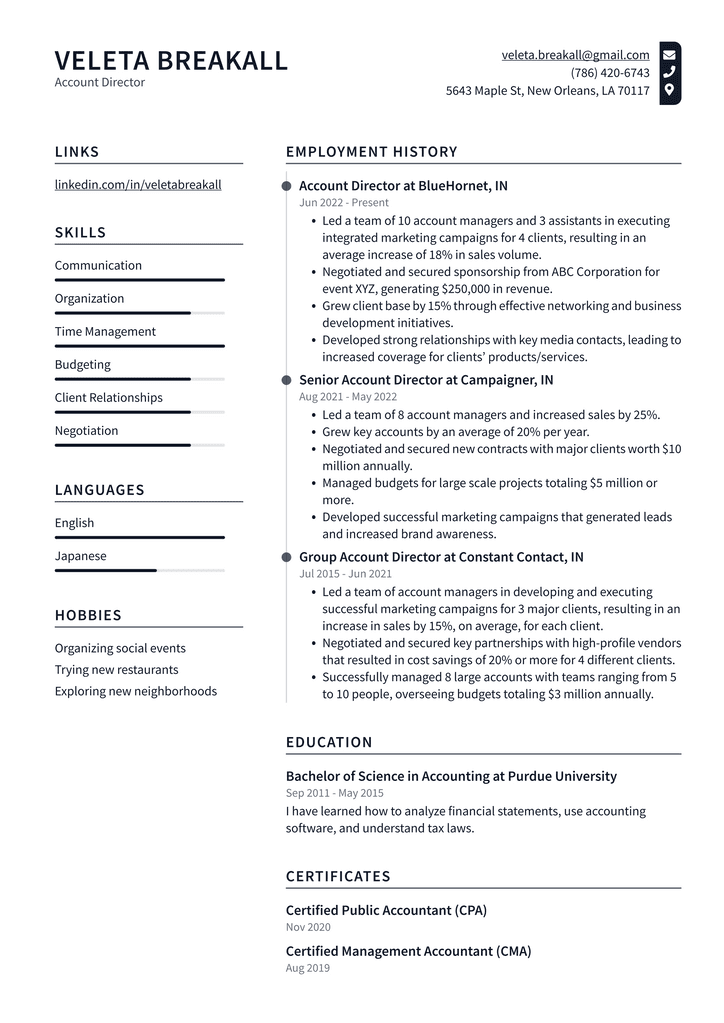
Download This Account Director Resume as PDF
Media Director Resume Example

Download This Media Director Resume as PDF
What to Include in an Advertising Director Resume?
We’ll start by looking at what you should include in a resume for an advertising director position. Your resume should consist of a summary of your professional experience and any skills relevant to this position. This section can be titled “Profile,” “Summary,” “Profile,” “Overview,” or “Profile.” It can also be called “Professional Experience” or “Professional Summary.” Your resume should also include a section on your education and training. This section can be titled “Education” or “Education and Training.” Include your degrees and certifications, if applicable. You can also include your professional development and volunteering experience here. Finally, a resume for an advertising director position should always have your work experience. This section can be titled “Professional Experience,” “Professional History,” “Work History,” or “Work Experience.”
Start With Your Summary or Profile
You’ll want to start your resume with a summary or profile if you’re applying for an advertising director position. A summary or profile is a one- to two-sentence description of your skills and career experience. It can be this short because you’ll have the rest of your resume to expand upon and explain each item. Your summary or profile should highlight your most valuable skills and experiences for the position. It should be brief enough to include at the top of your resume. Make sure you are honest and thorough with your profile. Your profile is the first thing a hiring manager will see, so it should be as impressive as possible.
List Your Most Recent Experience First
Most companies prefer to see work experience listed in reverse chronological order, with the most recent expertise displayed first. This makes sense because hiring managers want to know what you’ve done most recently. If you’ve worked at the same company for decades, they may not know your responsibilities. Remember that each job you list on your resume should only be one or two pages long. If you have a career that spans five or more pages of material, you may need to cut it in half and make two shorter lists. Try to keep each job description to one page. You can use a separate page for each job or combine two jobs onto a single page by splitting the report in half.
Showcase Key Skills and Responsibilities
When you list your work experience, try to showcase skills and responsibilities relevant to the job you’re applying for. For example, if you’re applying for a marketing director position, your experience managing advertising campaigns might be irrelevant. If a hiring manager sees that you’ve done this, they might think you’re overqualified for the job. So instead, focus on skills and responsibilities from your career that make you a better fit for the role. For example, suppose you need to list work experience as an advertising director. In that case, you might want to list responsibilities like managing the advertising budget, creating marketing plans, and implementing marketing strategies. These are likely more relevant to the marketing director position.
Don’t Forget to Highlight Any Accomplishments
An advertising director’s job often requires collaboration with many different departments. The best way to demonstrate that you’re a team player is to include any accomplishments you’ve had that involve working with others. You can consist of actions that relate to any job you’ve held. For example, if you’ve received a promotion, achieved a new title, received an award, or received special recognition, you can include this on your resume. You can also include accomplishments related to tasks you’ve completed outside of work. For example, if you’ve served on a nonprofit board or civic committee, you can list this on your resume. You can also include any clubs or organizations you’ve been a part of. Be sure to list accomplishments that directly relate to the job you’re applying for.
Wrapping Up
If you’re ready to apply for an advertising director position, you’ll need to write an effective resume. Make sure to include all the information outlined above to showcase your skills for the job. Your resume is your one chance to impress hiring managers and get invited to interview for your dream job. Give this document the attention it deserves so you can win against other job seekers. Remember, your resume will only get you through the first step of the application process—no further. To impress potential employers, you’ll also want to ensure that your resume is formatted correctly and that you’re using the correct terminology.